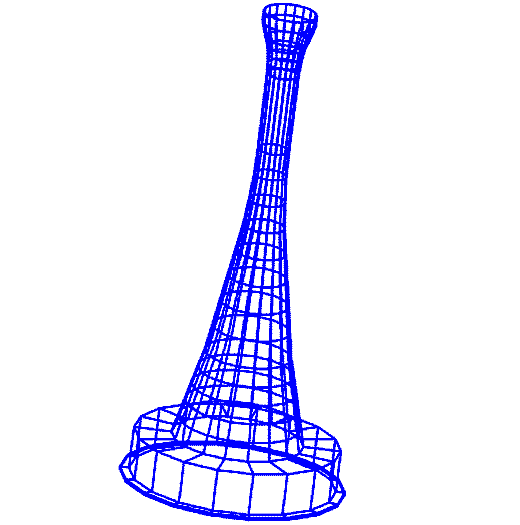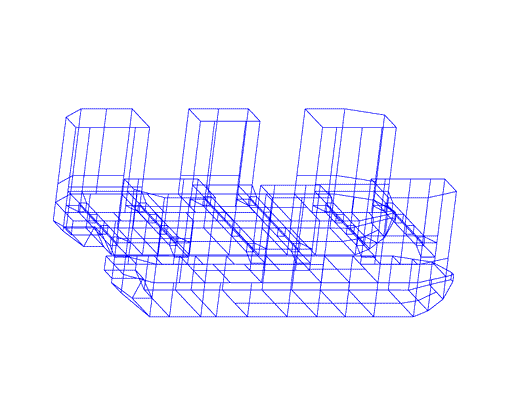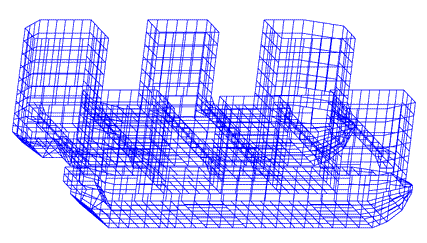- Overview of Vessel Modeling
- Vessel Modeling Macros
- Vessel Library
- Step by Step Tutorial for Barge Modeling Using Regular Tools
- Modeling examples using &surface tools
- Simple &SURFACE Example
- Generation of a Crane Semi
- Generation of a spar
- Generation of a TLP
- Generation of a Shell TLP
- Generation of a Semi-Sub complete with blisters
- Jackup Examples using the Generation Macros
Here, we consider the problem of how one goes about building a model of the compartments of a vessel. In MOSES, one of the compartments is the "exterior" or skin of the vessel, and this is more difficult to model than the interior ones. The reason for the complication is that the exterior model serves double duty, it is used for both the computation of hydrostatic forces and diffraction forces. With hydrostatics, one can have several pieces that touch and, aside from the wetted surface, the results will be quite acceptable. For diffraction, however, the panels must form a single, closed surface.
Any definition of a compartment in MOSES defines a set of plane areas called panels. The total model of a compartment can be composed of several subsets, each one of which is called a piece. There are two ways to define a piece in MOSES:
- One can define the intersection of the piece with a set of planes (the PGEN method), or
- One can define each panel.


requires a panel definition. Instead of requiring that the user manually define each panel for such a model, MOSES has a special menu, the &SURFACE menu, which allows one to combine pieces. In this way, the user can define complicated shapes with easy to define pieces.
In contrast to many programs, you do not have to define small panels to obtain good accuracy. The hydrostatic calculations in MOSES are exact for any panel model, provided that the panels exactly describe the body exterior. For diffraction computations, MOSES will automatically refine a coarse panel model to achieve any desired degree of fidelity. For example, when asked, MOSES will take the model above and turn it into

for diffraction calculations.
Thus, based on the above, in MOSES one should have as few large panels as possible. There is an exception to this rule. When performing a structural analysis, the total force on a panel is distributed to a set of nodes. By having large panels, one can miss some local details of the hydrostatic and hydrodynamic force.
